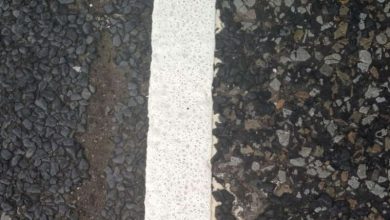What Waterproofing Membrane Is The Best For My Roof

Roofs are the most vulnerable parts of the buildings when it comes to water infiltration. They face intense wear and tear. So, it is important to add a waterproofing membrane during construction to protect roofs against adverse climates.
Roof waterproofing prevents possible leaks and mold formation. Thus, improving the performance and longevity for years to come. Research shows that waterproofing accounts for only 1% of the building construction’s cost. When ignored, it can be responsible for 90% of the damage.
The waterproofing membrane is an additive that is used during construction to prevent water infiltration into the building structure. Most often, people overlook its importance or consider it a costly product. But it can significantly reduce the cost of restorative work once your building encounters water leakage.
However, it is vital to understand that not all waterproofing chemicals are suitable for all purposes. Therefore, always make sure that you get the right waterproofing membrane type. This guide covers some good options to help you pick the best one.
Cementitious Waterproofing Membrane
This is the most common type of membrane and is a famous construction and building material. The cementitious membrane consists of dry cement, sand, and liquid latex. You can use these types of membranes as an additive in the cement. The mixture then turns into a cementitious fluid that is applied to the surfaces using a brush or a roller. The liquid latex plays a vital role in this membrane. It renders the waterproofing and flexibility of the product.
You will observe the following advantages:
- Seamless to apply on concrete and masonry surfaces and provides breathability.
- Long-lasting with a successful record of usage.
- Can withstand any kind of water pressure.
- Does not need heavy machinery.
- Environment-friendly
- It has good elasticity.
Liquid Waterproofing Membrane
A liquid waterproofing membrane is a monolithic, fully-bonded liquid coating. It is suitable for many waterproofing and roofing applications. It usually consists of a primer coat and two coats of topcoats. You can use a roller, spray, or trowel to apply the final product.
Moreover, when dried, it forms an elastic membrane capable of withstanding abrasion. It has the following benefits:
- Ideal for exposed roofs with complex details and penetrations.
- Breathable and releases water content trapped in the cracks and holes.
- Protects the roof or foundation from mechanical damages.
- Durable, cost-effective solution for roof repairs and renovations.
- Seamless to apply in gaps, cracks, and voids.
- Rapid curing and excellent adhesion to all kinds of surfaces.
- Concrete surfaces expand due to sunlight exposure. This liquid membrane expands with the concrete surface to prevent cracks and water penetration.
Bituminous Membrane
The bituminous membrane is a flexible protective coating known as asphalt coating. The bitumen-liquid membrane is well-known for its high performance and low price. It prevents water accumulation and makes concrete waterproof.
When you work on the roof waterproofing process, make sure to use this membrane. Plus, you can also use it to fill corners leaks, and drainage systems.
In addition, you can mix the Bitumen membrane with elastomeric and plastomeric polymers to enhance its properties. It increases the durability and strength to withstand wear and tear.
Unlike others, bitumen membranes are easy to maintain. They have a layer with a sticky substance on one side and a waterproof substance on the other side. They reduce installation errors because there is no multiple-layer installation.
The bitumen membrane has the following advantages:
- Odour-free
- Easy and flexible to apply
- Easy maintenance
- Longevity
Polyurethane Liquid Membrane
Polyurethane liquid waterproofing membrane is used for roofs subject to extreme weather conditions. This method is more expensive than other waterproofing membranes.
Moreover, the polyurethane waterproofing membrane is very sensitive to moisture content. So, it is vital for you to be careful in evaluating the moisture content of the concrete slab. Otherwise, it may peel off after some time.
However, it has many benefits, such as:
- Higher flexibility
- Decrease in the concrete’s water absorbency
- Polyurethane membrane hardens the uppermost concrete surface.
Final Word
At the end of the day, you will see many types of waterproofing membranes on the market. Each has its importance in terms of durability, life, and functionality of the building. It is important that you choose the right roof waterproofing chemical. Primarily relying on the size and location of the building.
Lastly, consider the impact of a waterproofing membrane on the structural integrity of your building. And choose a reliable construction material & building materials supplier.
Moreover, if you want to discuss your project requirements, get in touch with Ressichem. Here you will find different types of waterproofing membranes for different applications. But all of them enhance the strength of your properties.






